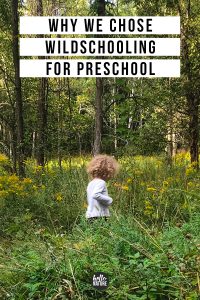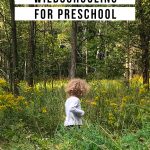Inside this post: Why we chose to use a nature-based homeschooling approach for preschool and curriculum ideas for you to do it with your kids.
“Keep tracing the letters,” I urged, knowing we were near the breaking point. I should have stopped. I knew we were headed into meltdown territory, but I was determined.
“Slow down. You can’t trace them that quickly!” I pushed. My gentle parenting tactics were beginning to fail me and I fought the urge to quit again.
I watched her slow down, only to speed up again, and complete disdain for our “fun activity” that I promised her set in.
“I can’t do it…” she said. Those four little words were drenched in sadness that made my heart ache. Deep down I knew this wasn’t how it was supposed to be. I knew I was doing this wrong. But I didn’t know any other way.
“We can keep trying together, sweetheart!” I responded, trying to exude confidence and excitement to make it seem more appealing.
“I don’t want to. Can we be done?” she asked, looking at me with desperation to do anything but this.
The flood of emotions and thoughts that followed hit me like a freight train.
I’m not cut out for this.
The book says 3 – and she’s 3. Why isn’t this working?
I’m a terrible teacher.
This isn’t what I wanted for her.
I paused a moment before responding, these thoughts assaulting everything I tried to speak.
“Of course.” It was all I could manage without emptying the depths of my failures onto her.
I’d like to say that day was the day I learned my lesson, but it wasn’t. It was, however, the last time we used the cookie-cutter preschool workbook… and I’m not sad about it.
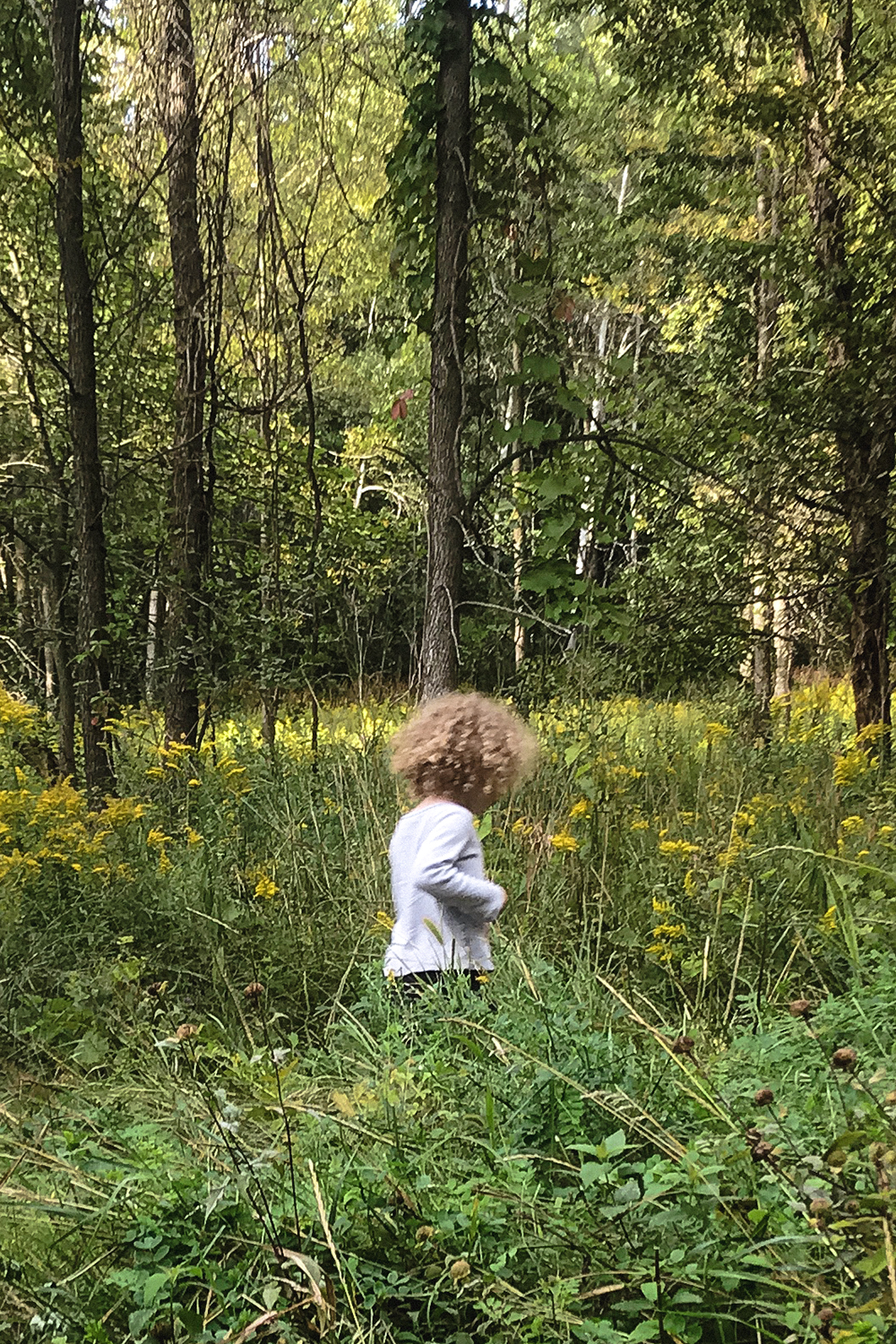
Over the next few weeks, we played instead. I gave up “teaching” and we focused on the fun. We read more books, played with toys that we created, and spent more time outside than ever before.
Doubt creeped in from time to time, chiding me for not doing enough. But I kept going. Unsure of what our next move would be for homeschooling, or if I should even bother yet, I just kept going. What else was I going to do?
Eventually, nature helped me slow down long enough to realize something. She was learning. And I was teaching. It just didn’t look like what I thought it would.
Even knowing all the ways nature helps children learn, it was hard for me to grasp that learning could be this easy.

We counted trees and subtracted rocks. We identified birds and their sounds while learning about water sources. We talked shapes and sizes of clouds. We went on scavenger hunts and studied terrain on our family hikes. And we lost hours to books about the weather, nature, animals, and more under the leaves of big trees.
Nature made learning feel effortless. Its beauty and abundance offered opportunity everywhere we looked. It wasn’t forced or hurried. It wasn’t right or wrong. It just was.
Related Reading: Family Benefits of Playing Outside in the Fall
And for us, we connected there, with a silent understanding that this was where we were meant to be. This was where we were meant to learn and teach each other.
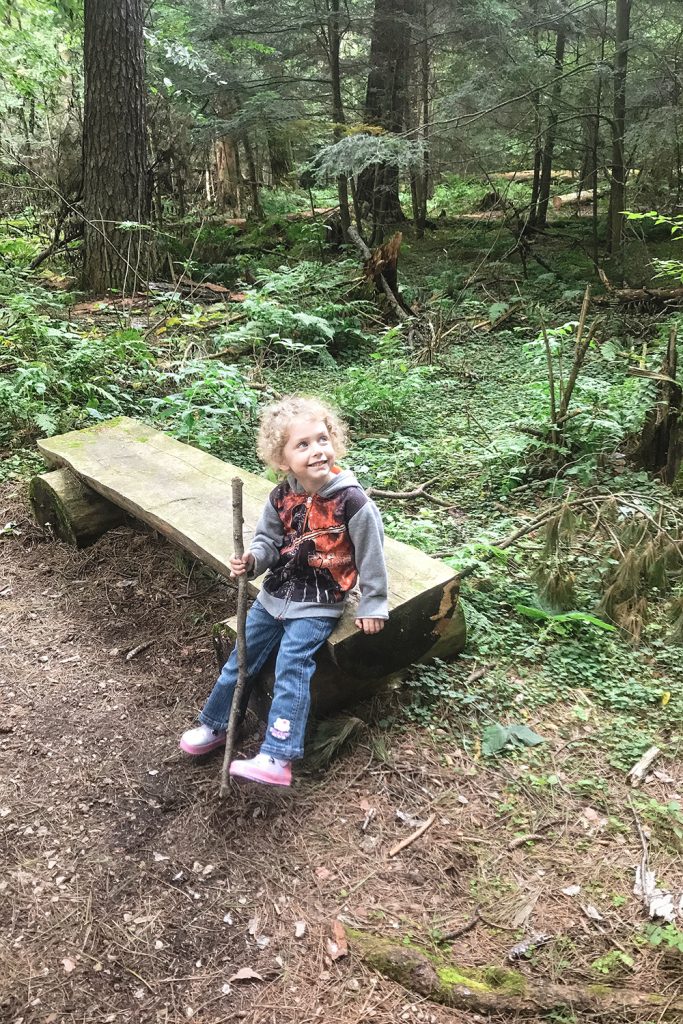
So we ditched the workbook and opted for nature based learning activities with guidance and ideas from two nature-based preschool curriculums. I’d been introduced to the idea of wildschooling before, but now, I understood what it meant for us and how valuable it was.
Nature Based Curriculums We Use
We’ve been using Exploring Nature with Children for awhile to really dive into some specific nature topics and guide our nature walks. While I feel like it’s a bit more suited to older children, it’s easy to adapt to younger kids. And many of the book suggestions have become favorites from the library!
We’ve also recently added the Blossom and Root Early Years Curriculum to give me some guidance on activities. This is less for her and more for me to come up with new, exciting ideas for play that don’t cost a fortune and are easy to put together. Blossom and Root also helps me create a well-rounded week with indoor and outdoor activities for when the weather isn’t as cooperative.
And while I absolutely don’t think you need these curriculums to teach nature-based preschool at home, they’ve helped me tremendously. My brain is constantly overloaded with life so it eases some of the stress of coming up with nature preschool activities all the time. And it helps me create teachable moments in our play, even when I’m exhausted and just ready for bedtime.
Overall, these nature focused studies help me be more intentional with my time with her and allow me to truly embrace these moments. Any tool that helps you spend quality time with your child holds value, in my book.
Nature Based Learning in Group Settings
While we’ve yet to try these out, there are a few options you can used for group learning outdoors.
Both Tinkergarten and a Free Forest School a great for nature based activities for younger children. Tinkergarten has some awesome activity ideas that you can easily do at home, too.
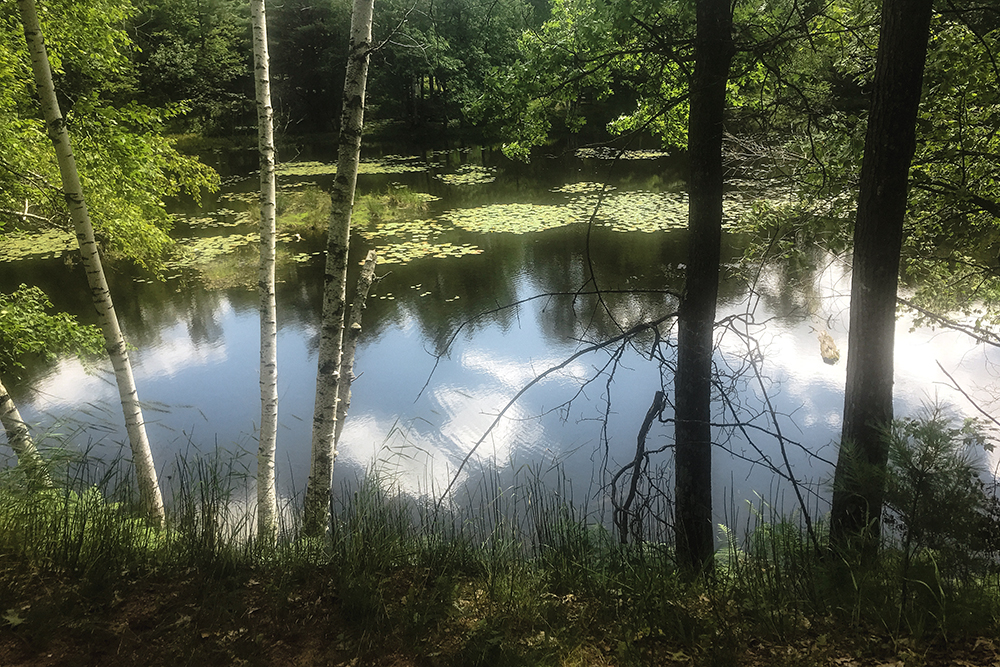
Why homeschooling?
As for why we’ve opted for homeschooling itself, it’s fairly simple: it’s what’s right for us. We’ve wanted to teach her since the day she was born. We feel like we can give her a better education than public school can and we’re fortunate enough to be able to do it.
I also appreciate the flexibility that homeschooling brings. We learn on our own schedule and she already has a say in how she learns, which I value tremendously. I know this path isn’t right for everyone, but it’s what works for us.
As for the workbooks, I’m sure we’ll pull them out again some day. Or maybe we’ll find a better way to incorporate the ideas of the workbook into nature instead. That sounds like a lot more fun to me!
Now it’s your turn! I’d love to hear why you chose homeschooling or nature-based schooling for your family. And if you have any other resources for nature based activities, please share!
